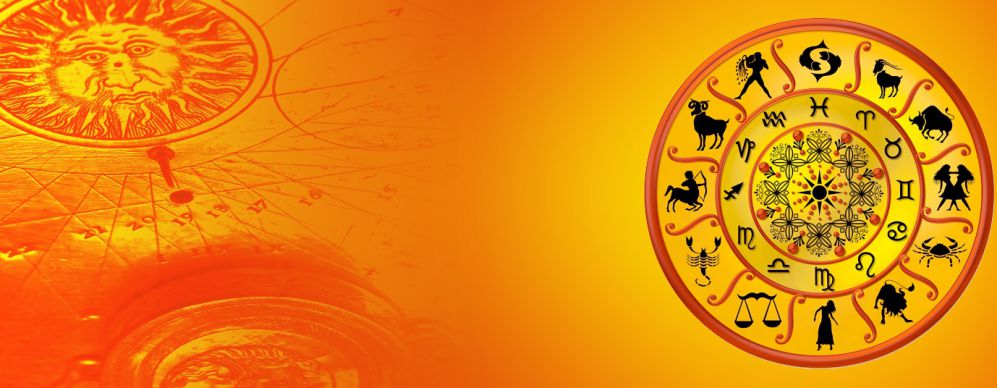No products in the cart.
A Panchang is a Hindu calendar and almanac, which follows traditional units of Hindu timekeeping, and presents important dates and their calculations in a tabulated form. Pachangas are used in Jyotisha shastra.
In Eastern India, including Assam, Bengal, Orissa the Panchanga is referred to as Panjika. It is an ancient Vedic astrology that helps one synchronize with his best days and times – ahead of time. Panchangas are published in India by many learned authors, societies, academies and universities. Different publications differ only minutely, at least for a casual or un-trained reader. They forecast celestial phenomena such as solar eclipses, forecast weather (rain, dryspells) as well as more mundane occurrences.
The theories propounded in the two scriptures, Surya Siddhanta and Grahalaghava formed the basis for the myriad calendars or Panchang in the past in different regions of the country.
The Grahalaghava was compiled some 600 years ago and Surya Siddhanta was available ages before that. But these had become outdated and did not tally with actual astronomical events and did not tally with each other also. Hence, a committee was appointed by the Government of India with experts in the field drawn from various parts of the country who were involved with preparation of Panchang in local languages to draw up a reliable Panchang in which the mathematical calculations would provide the positions of grahas (the planets) and nakshatras (constellations) in the sky as they are observed.
The Government of India has, therefore, prepared the National Panchang or the Indian national calendar in 1957 (was proposed by Saha and Lahiri in 1952), which is used in predictive astrology. The Lahiris Ephemeris published annually is the most widely used English almanac in Vedic astrology apart from the many Panchang published in local languages, which are mostly based on the National Panchang.
Chilakamarthi Prabhakar Chakravarthy Sarma had written world’s first English panchang.The study of Panchang involves understanding Rashi phala, the impact of the signs of the zodiac on the individual. Astrologers consult the Panchang to set auspicious dates for weddings, corporate mergers, and other worldly activities as per religion.
The actual casting of a Panchang involves elaborate mathematical work involving high level of spherical geometry and sound understanding of astronomical phenomena, such as sidereal movements of heavenly bodies. However, in practice the tabulation is done on the basis of short-cut formulations as propounded by ancient Vedic sages and scholars.
A typical Panchang may state tabulations of positions of Sun, Moon, and other planets for every day of the year on a fixed place (longitude, latitude) and time of day (in 24-hour format IST). The users calculate the remaining data using their relative difference from this fixed place and time.
There are two kinds of Lunar months followed in India – the New Moon ending called the Amanta or Sukladi system and the Full Moon ending (covering one Full Moon to the next) called the Purnimanta system), which are reckoned in predictive astrology, and each represents the name of the star on Full moon day of the Solar months. The twelve Lunar months along with the names of the Solar months are given below.
Lunar Month: Chitta
Solar Month: Chaitra
Solar Month: Chaitra
Lunar Month: Visaka
Solar Month: Vyshaka
Solar Month: Vyshaka
Lunar Month: Jyeshta
Solar Month: Jyeshta
Solar Month: Jyeshta
Lunar Month: Poorvashada
Solar Month: Ashada
Solar Month: Ashada
Lunar Month: Sravana
Solar Month: Shravana
Solar Month: Shravana
Lunar Month: Poorvabhadra
Solar Month: Bhadrapadha
Solar Month: Bhadrapadha
Lunar Month: Aswini
Solar Month: Aswija
Solar Month: Aswija
Lunar Month: Kartika
Solar Month: Kartika
Solar Month: Kartika
Lunar Month: Mrigashira
Solar Month: Margashira
Solar Month: Margashira
Lunar Month: Pushyami
Solar Month: Pushya
Solar Month: Pushya
Lunar Month: Makha
Solar Month: Magha
Solar Month: Magha
Lunar Month: Uttaraphalguni
Solar Month: Phalguna
Solar Month: Phalguna
What is a Panchang?
(1) In Vedic astrology, Panchang meaning “five attributes” of the day. They are:
- Tithi – Ending Moment (EM) of elongation of the Moon, the lunar day, the angular relationship between Sun and Moon ( Apparent Moon minus Apparent Sun). One Tithi equals 12 degree difference between Moon and Sun.
- Nakshatra – EM of asterism of the day, that is, the stellar mansion in which Moon is located for an observer at the center of the Earth. One Nakshatra equals 13 degrees : 20 minutes. There are 27 Nakshatra in 360 degrees.
- Yoga – EM of the angular relationship between Sun and Moon( Apparent Moon plus Apparent Sun). One Yoga equals 13 degrees:20 minutes. There are 27 Yogas in 360 degrees.
- Karana – EM of half of a Tithi. One Karaṇaequals 6 degree difference between Moon and Sun.
- Var – weekday the seven weekdays. Monier gives “solar day” instead of Rasi as the fifth limb. Some people enumerate Var (days of the week) instead. Var or solar days do not involve intricate computations, unlike EM of Radi. However, in the Hindu system the five elements only constitute the five limbs of the Panchanga.
(2) An almanac that contains the astronomical / astrological daily details also came to be called a Panchanga because of the importance of five attributes.
(3) Panchang-pukan, which is a part of Ganesh-Ambika-pujan.
Therefore, being more accurate than conventional horoscopes, Panchang has many practical uses like that in the fields of love, travel, money, work and much more.






